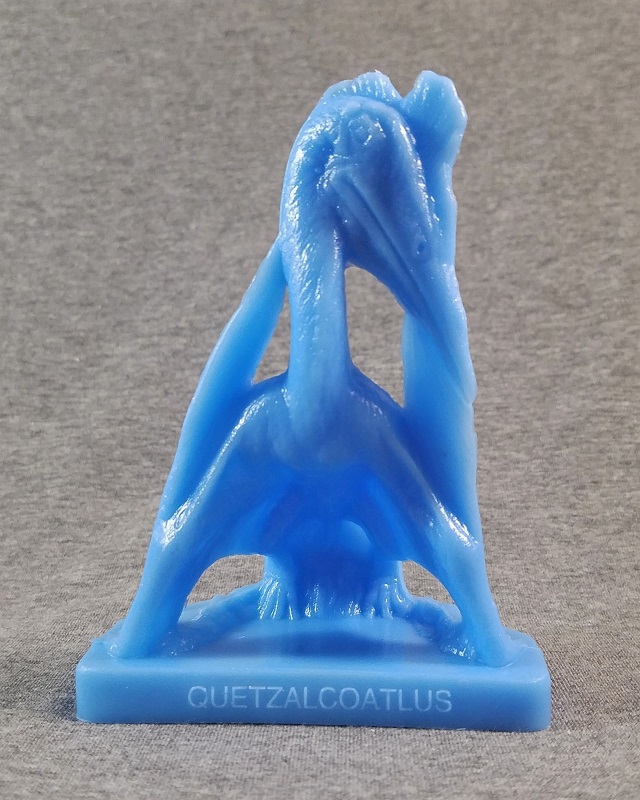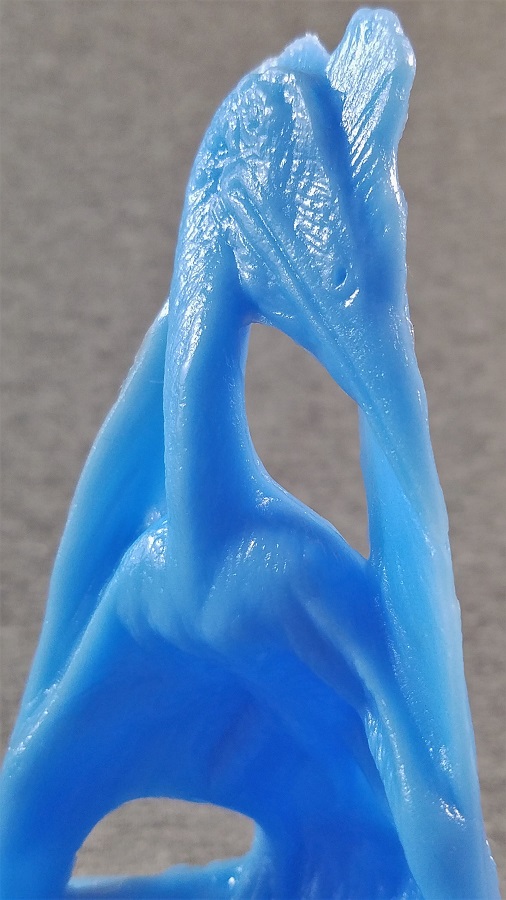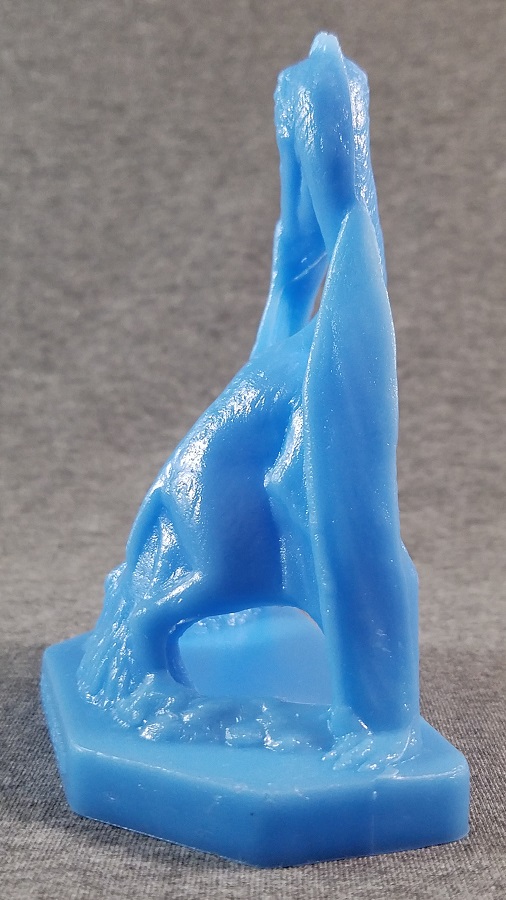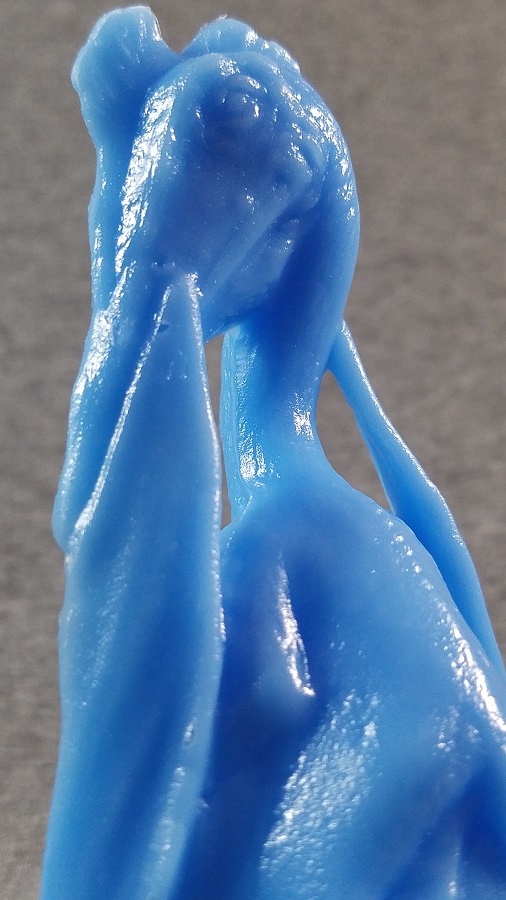Nearly 60 years after Mold-A-Rama imprinted itself as an icon of American toy memorabilia, The Field Museum of Chicago collaborated with Mold-A-Rama to produce a brand-new prehistoric creature in classic plastic form.
Mold-A-Rama figures have been an icon of dinosaur toy collecting for decades. Originally conceived in the 1950s by Tike Miller for personal use, the first official molding machines were revealed to the world at the 1962 Seattle World’s Fair by Automatic Retailers of America. Two years later, Mold-A-Rama would see even more prominence at the 1964 New York World’s fair; in particular, a collaboration with Sinclair Oil Company’s Dinoland led to the production of seven dinosaur figurines representing several of the genera featured in Sinclair’s grandiose exhibit. Although these original mold runs have long gone out of production – and the company, plus its machines, have traded hands a few times over the decades – Mold-A-Rama Inc. has survived to this day, and several of the classic machines remain running around the country – including, of note for this review, the Chicago Field Museum of Natural History.

Several of the Sinclair Dinoland molds can still be purchased, freshly-molded, from machines positioned throughout the Field Museum. In January of 2021, however, Mold-A-Rama Inc. and the Field collaborated to bring guests a surprise: a brand-new mold sculpt to continue promotion of the Field’s recent renovations to their “Evolving Planet” prehistory exhibit. Sixty years after the first machines were unveiled to the world, this entirely-new museum exclusive mold is a fine modern addition to the classic Mold-A-Rama lineup. The new mold was of Quetzalcoatlus, a colossal pterosaur which lived in Late Cretaceous North America and was one of the absolute biggest flying animals that ever lived. In 2018 the Field commissioned a new menagerie of life-sized pterosaur models to decorate the upper lofts, including two statues of the flying giant to stand/fly guard outside the “Evolving Planet” entrance. Nestled quietly between the two giants, by the exhibit entrance, is the Mold-A-Rama machine and its miniature plastic replica, ready and waiting customers.

Mold-A-Rama’s Quetzalcoatlus stands just about 11 cm (4.25 in) tall with the base, which features the animal’s genus name engraved on the front and the Field Museum’s name on the back. The base is trapezoidal in shape to accommodate the figure’s anatomy and stance, posed on all fours in a semi-squatted/perched position. Texture of the plastic is smooth and slightly waxy, as per normal for Mold-A-Rama figures. Fine details on the sculpt include meticulous skin texture around the face, ridged bone/keratin structure on the crest, and even a faint coat of hairy pycnofibers over the neck, shoulders, and back. Different machines are set to mold their given design in a particular color, and the Quetzalcoatlus comes in a bright sky blue. An orange variant was also available in early 2021, but only for a limited time through Mold-A-Rama’s main website and through an event hosted at the Brookfield zoo.

The Dinoland figurines were designed to replicate Sinclair’s state-of-the-art fiberglass & animatronic models, themselves intended to reflect contemporary scientific understanding. In the same manner, the new Quetzalcoatlus sculpt reflects current knowledge regarding the giant pterosaur, albeit with a little stylized creative license. The aforementioned quadrupedal stance is appropriate for most pterosaur species, which are now believed to have been much more adept on the ground than we used to think. While the sculpt depicts the animal incorrectly on its tiptoes instead of the flats of its feet, the hands are correctly displayed in their strange backwards-facing alignment. The wing fingers fold behind and alongside the arm, stretching admittedly farther past the shoulders than is accurate, but perhaps compensating for the overall diminished proportions of the arms – azhdarchid pterosaurs like Quetzalcoatlus had truly wild proportions in life. By that same token, the neck and head of the sculpt, as large as they appear, would actually be even longer in the live creature. Understandably, though, many of these proportions were probably diminished for the sake of the mold’s overall size and production efficiency, and the resulting model still does a pretty good job conveying the animal’s remarkable appearance.

This year marked the 60th anniversary of the Seattle World’s Fair, which was held from April to October of 1962. This year also marked 60 years since audiences and customers got their first taste of Tike Miller’s and ARA’s Mold-A-Rama toys, which were featured around the fairgrounds. Although these figures might seem quaint by today’s standards (and fragile – don’t let kids roughhouse these like a Jurassic Park toy!), they retain a historical charm and a certain charisma in the simplicity. The Field Museum Quetzalcoatlus is the first non-dinosaur prehistoric animal produced in Mold-A-Rama’s long-lived lineup, and it’s a fine example of the brand’s style juxtaposed in the modern day. Although Mold-A-Rama Inc. no longer sells this particular mold on their website, the molding machine at the Field Museum is poised to remain active for the foreseeable future, located just around the corner from “Evolving Planet” on the upper floor. I certainly recommend getting oneself a mold if one happens to visit the museum; but one can also try eBay for second-hand listings of the figure as well.

Disclaimer: links to Ebay and Amazon on the DinoToyBlog are affiliate links, so we make a small commission if you use them. Thanks for supporting us!




This one is a must have for my collection.
Unlike the Stegosaurus, which often came out of the machine with tail spikes broken off, this design really works well with the unusual production medium. Very cool to have another prehistoric animal from Mold-a-Rama after all these years.
Great review. I love the Mold-A-Rama figures. I’m woefully behind on getting this one though.
Congrats on your 75th review!